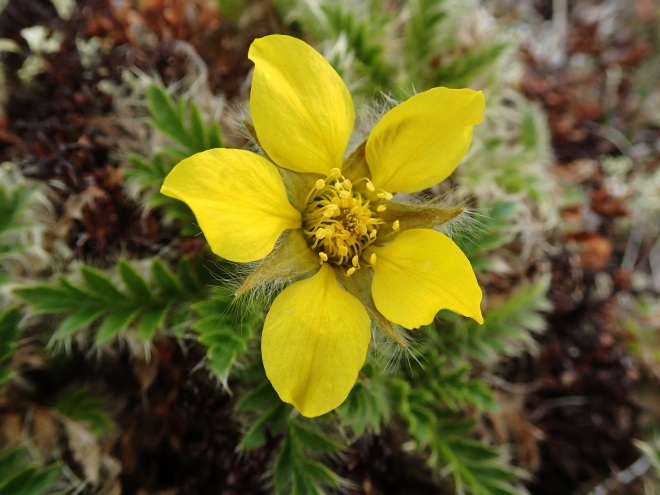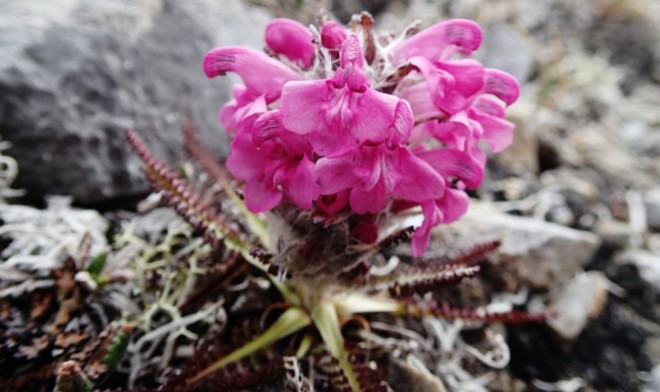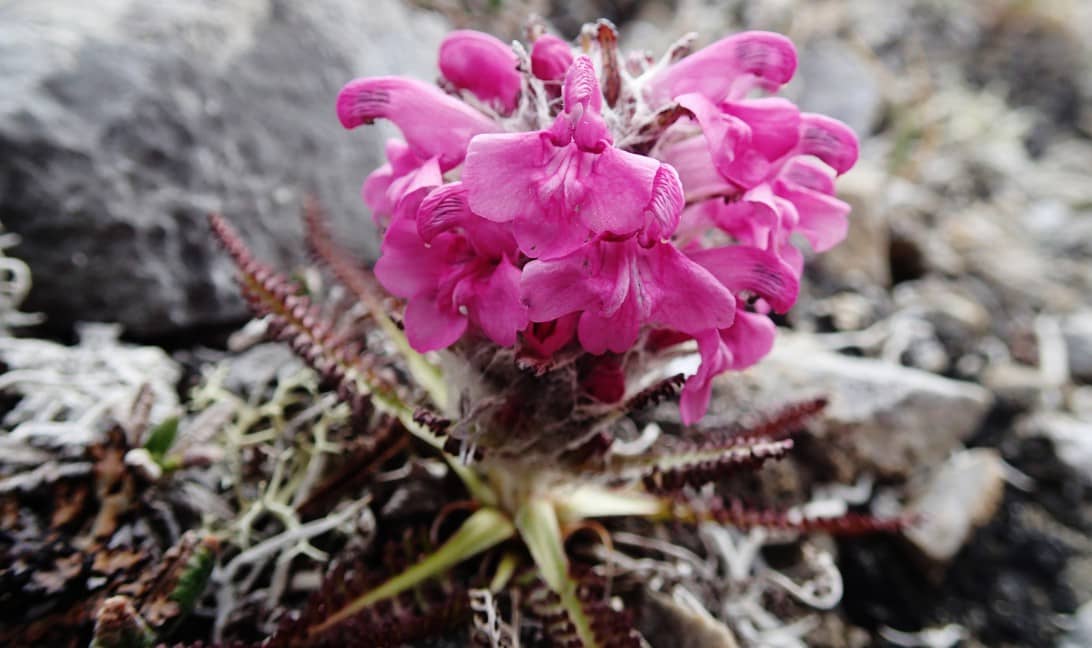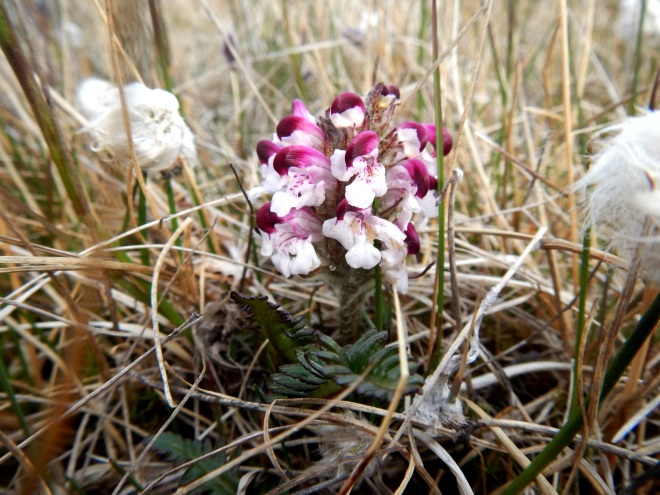In northwest Alaska, snow can fall any month of the year, but the spring is particularly variable. The temperature often drops below freezing. And yet, even in early May, plants that have overwintered as seeds emerge and dot the landscape with color.

Woolly Lousewort (Pedicularis lanata), Cinquefoil species (Potentilla), and small Saxifrage (Saxifraga) bloom early on the Seward Peninsula. These species must avoid freezing through adaptations in structure. Saxifrages stay out of the wind by growing very low to the ground in mats of thick, succulent leaves. Lousewort and Cinquefoil are relatively taller, between 3 and 8 inches, with larger blooms. They have dense white hairs covering the stems and leaves, creating a “woolly” appearance.

The hairs seem to be especially important for the earliest blooming plants. Sudetic Lousewort (Pedicularis sudetica), which is visibly less hairy, blooms a full month later than Woolly Lousewort.
There are non-woolly plants that bloom in the spring, as well as woolly plants that bloom later on in midsummer, so there is flexibility in this trait. The hairs may serve more as a defense against water loss later on. After observing the difference between lousewort species, I would like to know whether the proportion of woolly plants on the landscape decreases over the growing season.

